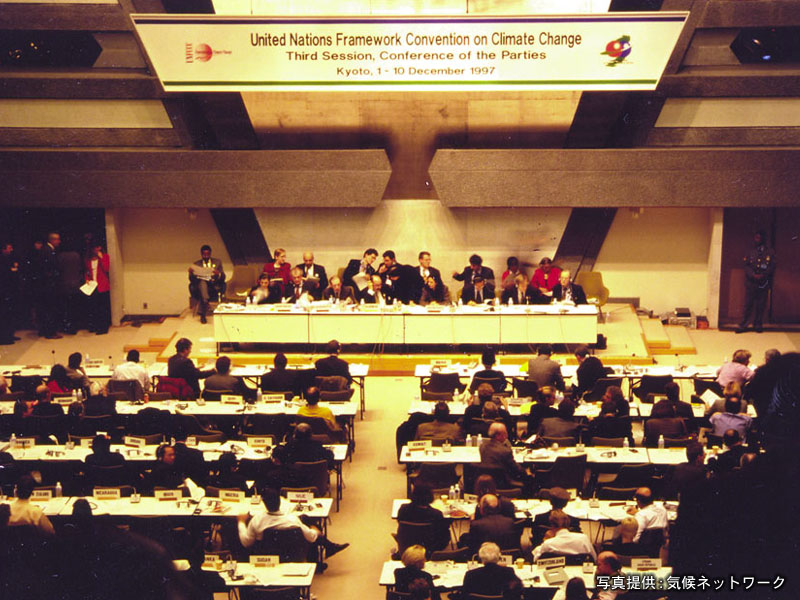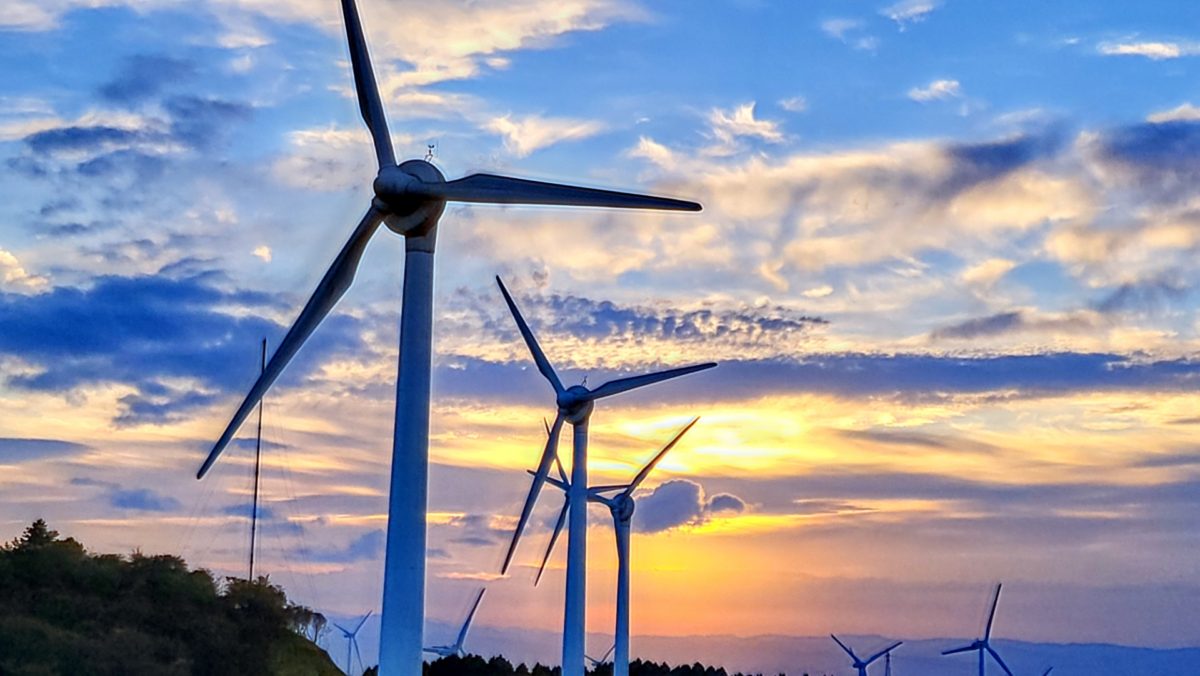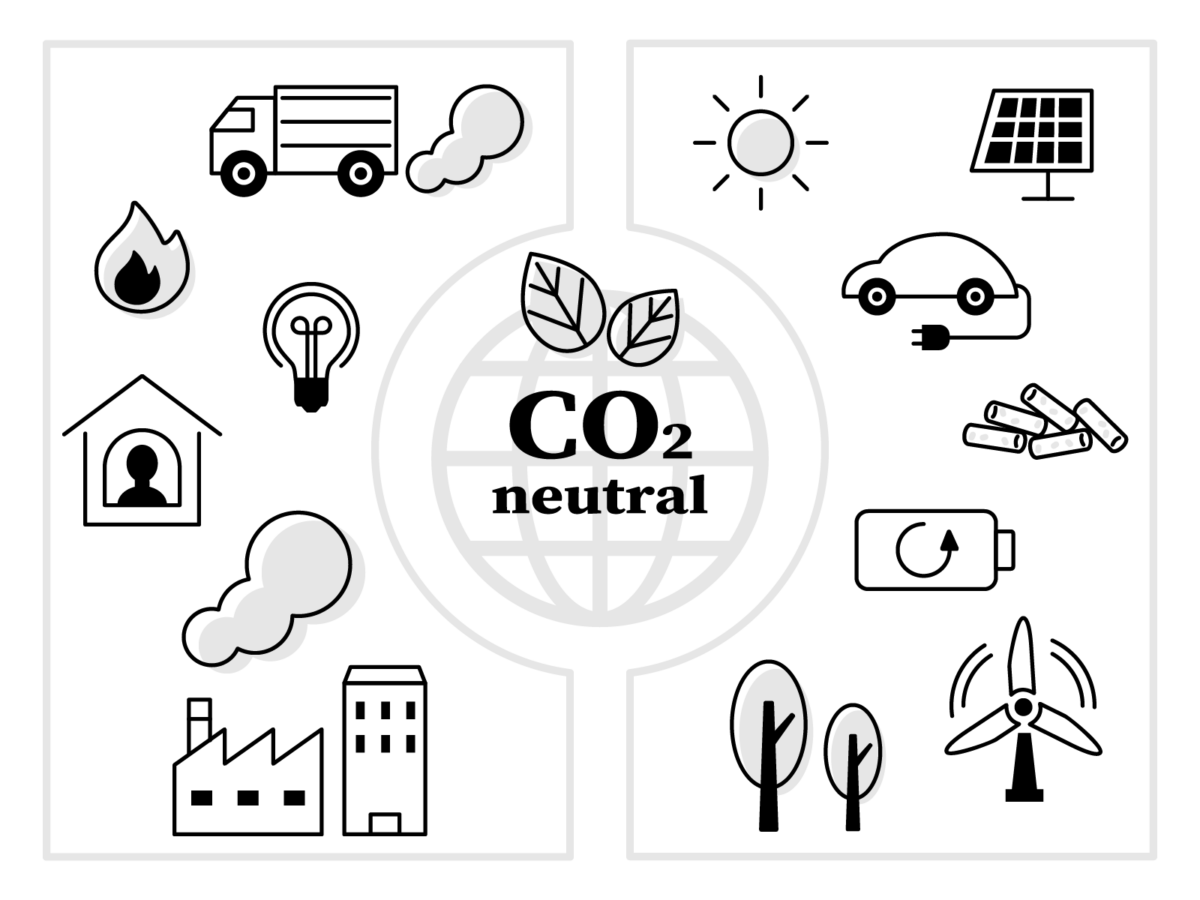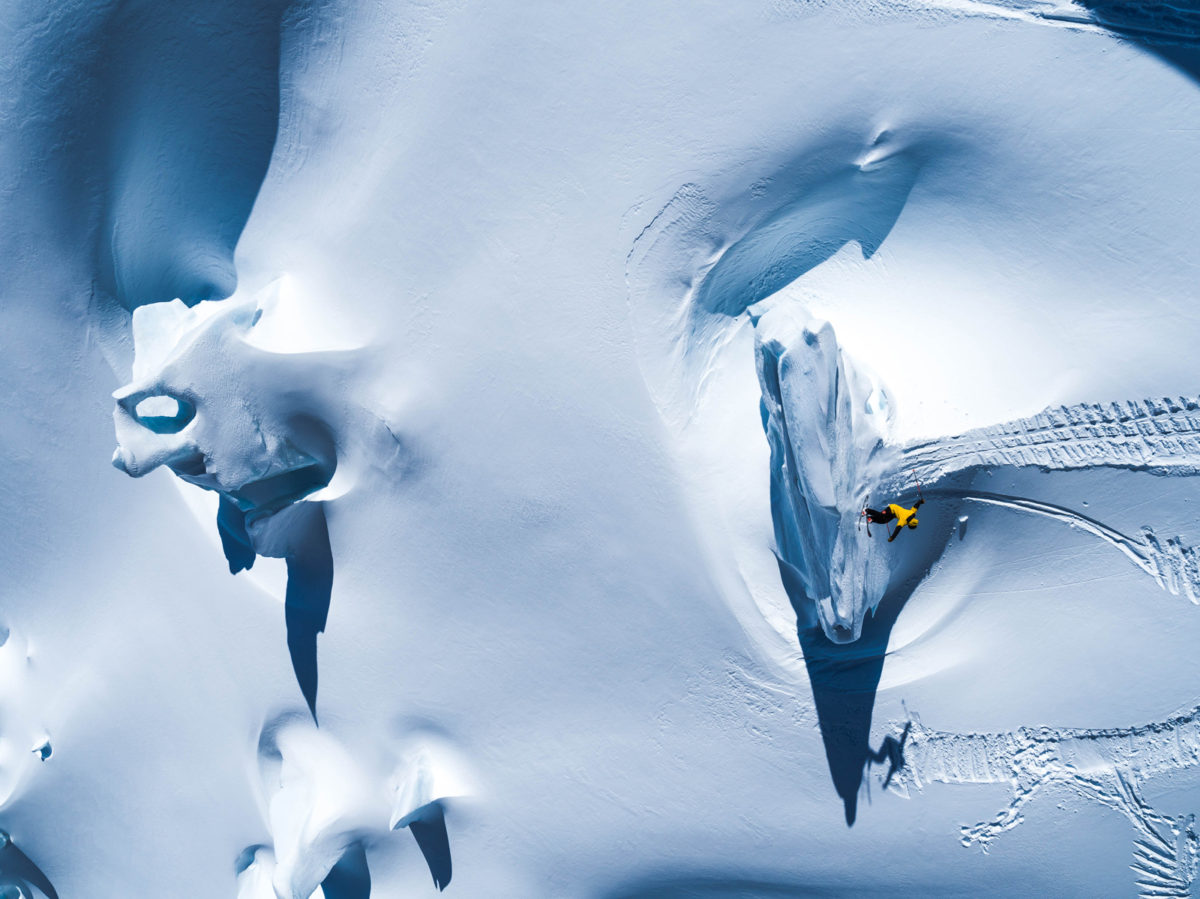Photo: Tony Harrington
"THINK SNOW" Thinking about future snow is almost equal to thinking about the future of the earth. May you always be able to ski on the powder snow of your dreams... May the properly cold winters that bring the snow be sustainable on earth…. Let's start by looking for hints on what actions each of us can take to protect the snow, starting with efforts to combat climate change on a global scale.
Process of tackling climate change
Even now, the concentration of greenhouse gases in the atmosphere continues to increase, and it is feared that global warming will continue to progress. The environmental problem known as global warming in Japan is more often referred to internationally as "Climate change" and is pervasive throughout the world. Did you know that in order to address climate change on a global scale, numerous international conferences have been held so far, and national governments have come up with international treaties for climate change countermeasures?

1997 Kyoto Protocol promulgated
In 1997, the Kyoto Protocol was promulgated. This was the first international commitment to reduce CO2 emissions.
"Reduce greenhouse gases by approximately 5% between 2008 and 2012 compared to 1990 levels."
In addition, each country has set a reduction target for greenhouse gas emissions, with the EU pledging to reduce by 8%, the United States by 7%, and Japan by 6%. The national project "Team Minus 6℃" was launched to achieve this goal. Many people may feel nostalgic for this logo.

Under the slogan, "Aim! One person, one day, 1kg CO2 reduction", the following six efforts were made.
ACT1
: Let's reduce it by temperature control "Let's set the cooling to 28℃ and the heating to 20℃.
" Let's drive." ACT4: Let's reduce by choosing products "Choose and buy eco-friendly products."
ACT5 : Let's reduce by shopping and garbage "Refuse excessive packaging." Let's pull the plug diligently."
As a result, a new style called Cool Biz was born, and STOP! The concept of fuel-efficient eco-driving, such as avoiding idling, sudden starts, and sudden stops, was also put into practice.
Entry into force of the 2015 Paris Agreement
At the time, Japan had successfully achieved the 6% CO2 reduction target, which was said to be difficult. The successor to the Kyoto Protocol was established at the Conference of the Parties to the United Nations Framework Convention on Climate Change (commonly known as the COP) held in Paris in 2015 to discuss international agreements on reducing greenhouse gases. It was the Paris Agreement. Japan will also become a party to the Paris Agreement after going through ratification procedures.
The Paris Agreement set the following global long-term goals.
- Paris Agreement (adopted in December 2015, entered into force in November 2016)
- Keep the global average temperature rise well below 2°C above pre-industrial levels and strive to limit it to 1.5°C
. Therefore, global greenhouse gas emissions will peak out as soon as possible, and in
the second half of the 21st century, greenhouse gas emissions will be balanced with sinks (for example, by forests) .
The Paris Agreement requires all participating countries and regions, including developing countries, to set "greenhouse gas reduction and control targets" for 2020 and beyond. must be submitted and updated every five years as a contribution (NDC) determined by the
In Japan, a medium-term goal was set to reduce greenhouse gas emissions by 26% from the FY2013 level by FY2030.
In Japan, most of the CO2 is generated by power generation, factory operation, and automobile use. Therefore, it is important to consider power generation methods, save energy in factories, and popularize electric vehicles that do not emit CO2. In particular, it is desired to utilize environmentally friendly power generation methods such as solar power, wind power, geothermal power, and hydraulic power that do not emit CO2.
Renewable energy such as solar power, wind power, geothermal power, small- and medium-sized hydropower, and biomass can be produced domestically without emitting greenhouse gases.

For example, ski resorts use a huge amount of electricity to operate lifts, light the slopes, operate artificial snow machines, and operate resort facilities. In order to reduce greenhouse gas emissions, companies that operate ski resorts have begun to switch to renewable energy sources such as wind, water and solar power.
2050CN Carbon Neutral Declaration, Towards a decarbonized society
In June 2019, Japan also formulated a long-term strategy as a growth strategy based on the Paris Agreement and submitted it to the United Nations. Then Prime Minister Suga declared that "Japan aims to reduce greenhouse gas emissions to zero by 2050, that is, to realize a carbon-neutral, decarbonized society by 2050."
In October 2020, the Japanese government declared its goal of becoming carbon neutral by 2050, reducing greenhouse gas emissions to zero overall.
“Carbon-neutral,” which means reducing emissions to zero overall, means that the amount of greenhouse gases, including carbon dioxide, is “emissions” minus the “absorption amount” due to afforestation, forest management, etc. means zero. Achieving carbon neutrality requires reducing greenhouse gas emissions as well as preserving and enhancing sinks. Of course, protecting forests and greenery is also an important measure.

At present, the world is making efforts to realize this goal, and more than 120 countries and regions have set the goal of becoming carbon neutral by 2050.
▼You tube video/animation “Carbon Zero” (3 minutes 28 seconds)
Raising the 2030 greenhouse gas reduction target to 46%
On April 22, 2021, at the climate summit "Leaders Summit on Climate", the Japanese government announced that it would raise the greenhouse gas reduction target for fiscal 2030 to 46% reduction compared to 2013.
While it is said that this is a 70% increase over the current target, it will not be an easy task. In response, the government announced at the Headquarters for the Promotion of Global Warming Countermeasures that ``the maximum use of decarbonized power sources such as renewable energy'' will be achieved. He showed his willingness to work on measures such as “support for decarbonization of the region” and “support for regional decarbonization.” If global warming continues at its current rate, I worry about the future of snow. In order to protect the precious snow and white fields, now is the time for each and every one of us to be conscious and do what we can do.

10 individual actions you can take against climate change
Saving electricity that uses coal, oil, and gas as fuel, using means of transportation that can reduce greenhouse gas emissions, preventing food loss, buying less and using it longer while repairing it, recycling, being environmentally friendly as a consumer. There are many things that you can do to combat climate change by being aware of it in your daily life, such as choosing products from companies that consider it. And if we get the people around us involved, we can make even greater changes.

The United Nations website proposes ``10 actions that individuals can take'' that anyone can contribute to curbing climate change. https://www.unic.or.jp/activities/economic_social_development/sustainable_development/climate_change_un/actnow/
- save electricity at home
- Walk, bike or use public transportation
- eat more vegetables
- Consider long-distance transportation
- reduce food waste
- reduce, reuse, repair, recycle
- change the energy source in your home
- switch to an electric car
- Choose eco-friendly products
- speak up

Let's think about these actions from a skier/snowboarder's point of view.
| 1 | save electricity at home |
| Most of the electrical appliances used in the home emit CO₂. Even if the attitude of "energy saving at home" is a small action, if everyone puts it into practice, it will result in a large reduction in CO2 emissions. | |
| 2 | Walk, bike or use public transportation |
| Most cars burn light oil or gasoline and emit a lot of CO2. If you prefer to go skiing in your own car, try using trains and buses as well. Also, I would like to reduce the number of cars by carpooling as much as possible. | |
| 3 | eat more vegetables |
| Plant-based food production emits fewer greenhouse gases and requires less energy, land and water. By eating less meat and dairy products and eating more vegetables, fruits, legumes and nuts, you can reduce your environmental impact. | |
| 4 | Consider long-distance transportation |
| Airplanes burn large amounts of fossil fuels and emit large amounts of greenhouse gases. Do you use the train to go skiing in Hokkaido? It may be unrealistic, but when you go skiing by car, you have the option of choosing a nearby ski resort. | |
| 5 | reduce food waste |
| Have you finished eating on the slopes or at the inn? When food is wasted, the energy used from production to transportation is also wasted. Eat up all the food and meals you buy on a daily basis. There are children in the world who are suffering from hunger. | |
| 6 | reduce, reuse, repair, recycle |
| Gear is essential for enjoying skiing. But let's think about it. If you repair that wear, can you wear it more? How about riding an all-mountain board that you can ski anywhere with just one? Isn't it okay if it's second hand? In your ski life, you should be able to practice this "Reduce, Reuse, Repair, Recycle" in various ways. | |
| 7 | change the energy source in your home |
| If you practice eco-living with a high degree of awareness, it is an ideal attempt to switch your home's electricity to renewable energy such as wind and solar power. Now you can choose from a variety of power companies, and there are many easy-to-use plans such as cell phone and power set plans. | |
| 8 | switch to an electric car |
| If you are thinking of buying a new car, the next choice should be an electric car. The hurdles to purchase EVs are definitely coming down, and the installation of EV stations at resorts is accelerating. | |
| 9 | Choose eco-friendly products |
| What we use, what we buy, and our own consumption behavior all affect the global environment. what to choose For example, choosing clothing and wax that use environmentally friendly materials, choosing resorts that use renewable energy to go skiing, and choosing products and services from companies that have a corporate stance on environmental protection can contribute to climate change. can contribute to | |
| 10 | speak up |
| A big change can be caused by involving the surroundings rather than the actions of only one person. To “raise your voice,” why not join the activities of people and organizations that are actively working on climate change for a snowy future? |
[References]
Introduction to SDGs For everyone who will change the future Norifumi Kanie (Iwanami Shoten) What
the Earth will look like in 2030 through data Kenji Fuma (Nikkei BP)
30 ways to protect the world from climate change: Our Climate Justice !
International Environmental NGO FoE Japan Climate Change/Energy Team (Joint Publishing)
A Book that Understands the Basics of Environmental Issues Hitoshi Kadowaki (Shuwa System)
Global Environment Keyword Encyclopedia Global Environment Research Group (Chuohoki)
Greenhouse Gas Reduction and Emissions Trading Mizuho Corporate Mizuho Information & Research Institute (Nikkan Kogyo Shimbun)

